-
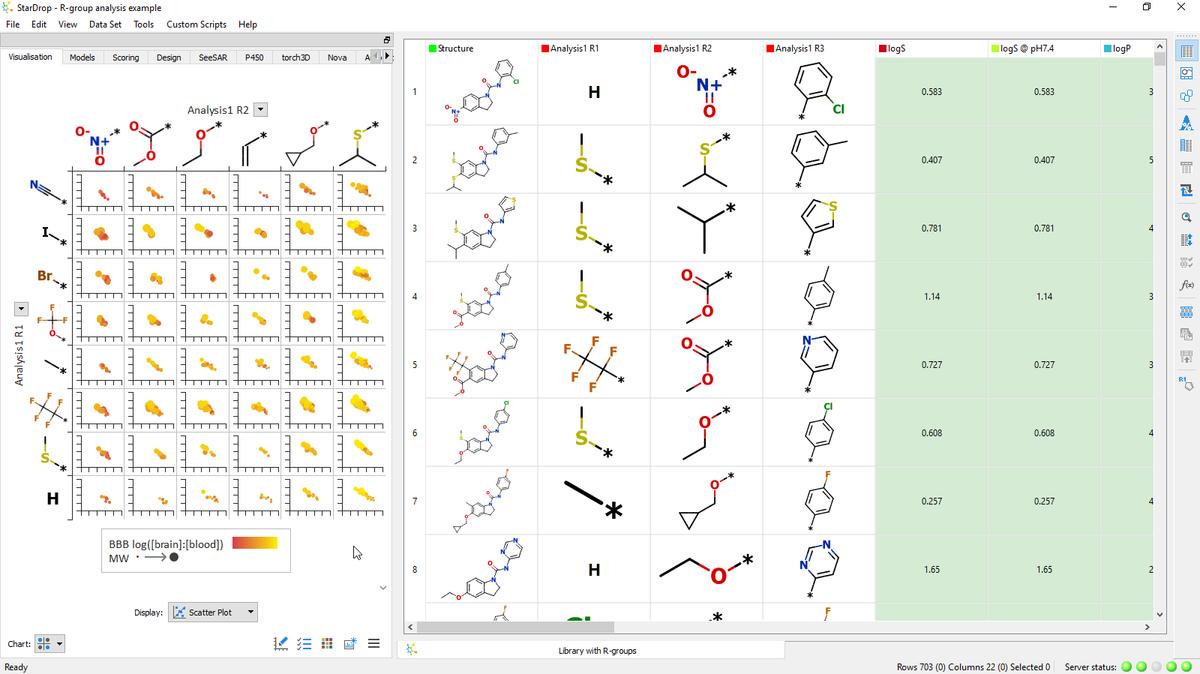
Hints and Tips: Information-Rich SAR Plots
This short video illustrates how to create information-rich SAR plots, including pie charts, histograms, scatter plots, radar plots, etc. to view property distributions by R-group in StarDrop's data visualisation area. In the next video in this series on R-group analysis, you can find out how to...
-
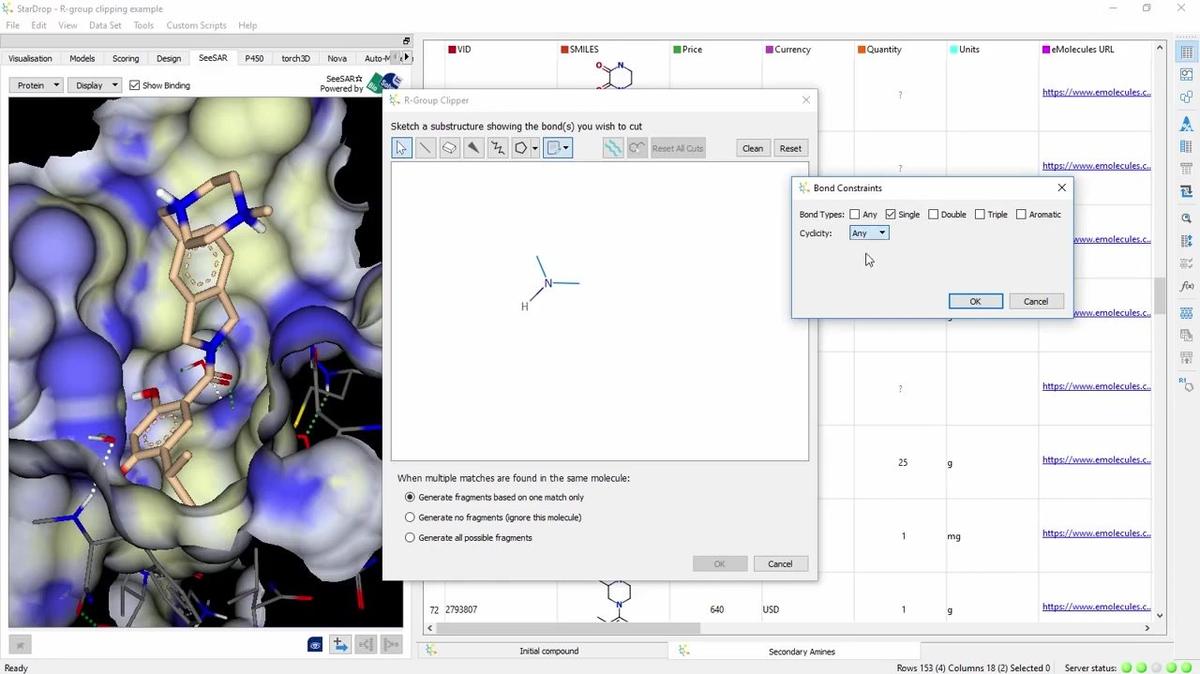
Hints and Tips: R-group Clipping
Matt Segall StarDrop's R-group clipping tool enables you to quickly transform chemical building blocks into their corresponding substituents. These can be immediately used to enumerate virtual libraries in StarDrop’s Nova module and explore new design hypotheses. This short video show you how...
-
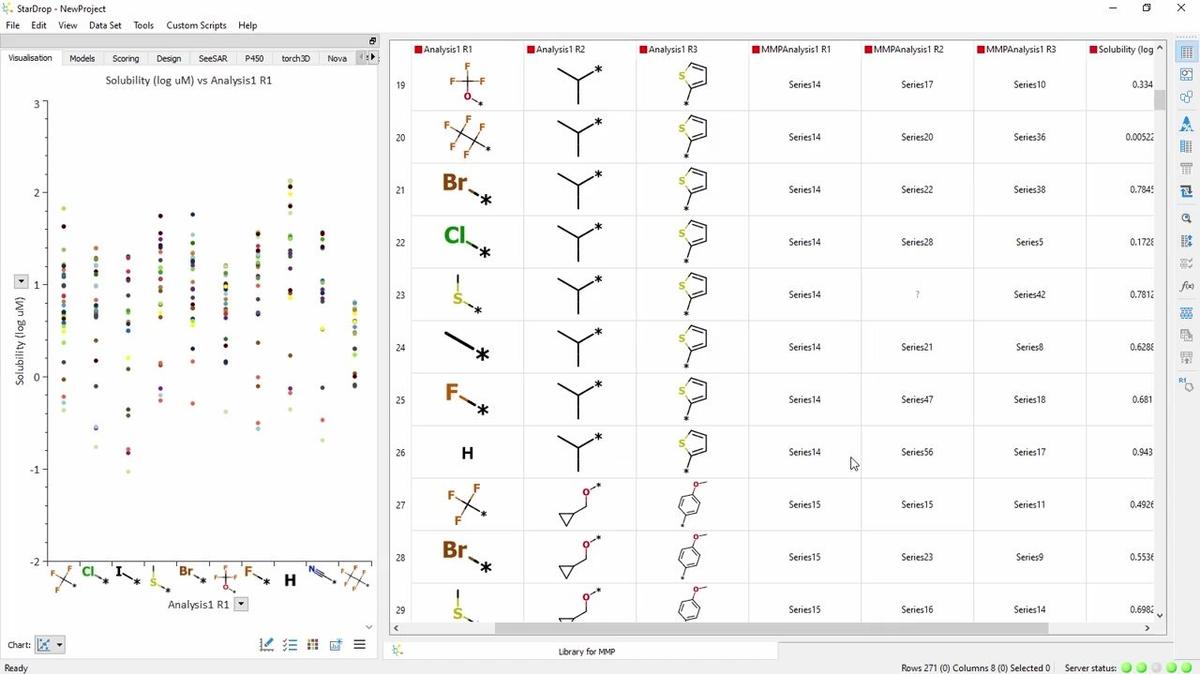
Hints and Tips: R-group Matched Pair Analysis
This short video illustrates how to perform Matched Molecular Pair Analysis (MMPA) within a chemical series using StarDrop's R-group analysis tool This is quite a specific form of MMPA and you may also be interested in the short video describing the general MMPA tool in StarDrop and how it can b...
-
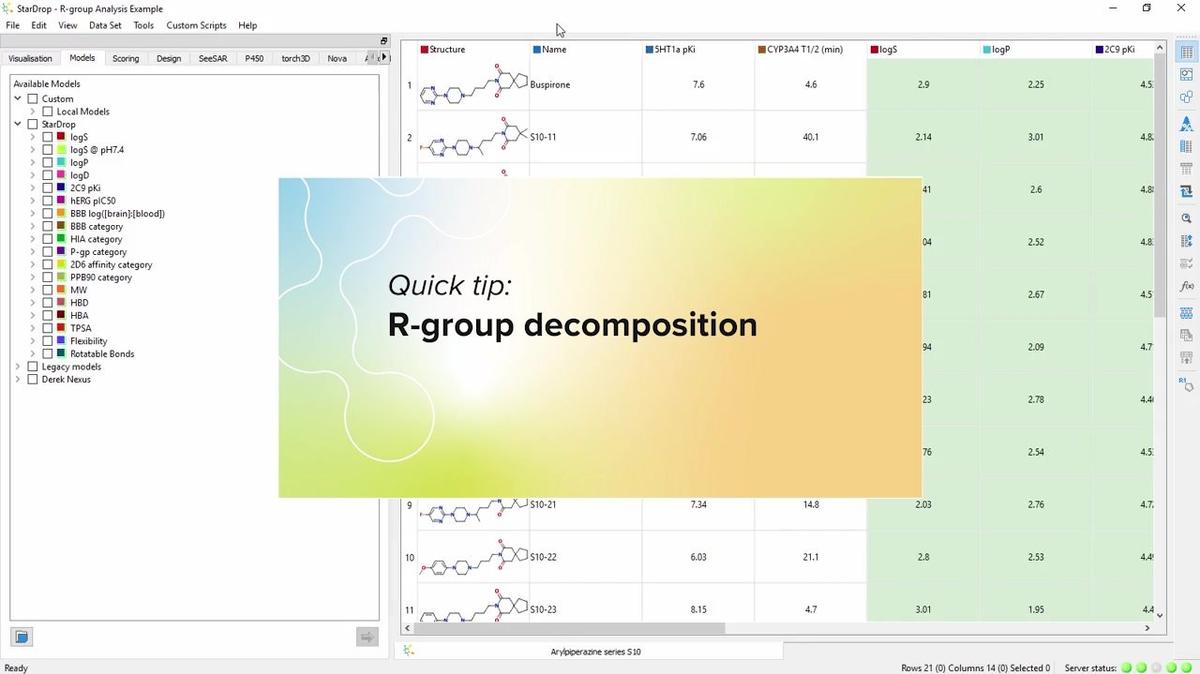
Hints and Tips: R-group Analysis
This short demo gives a quick introduction to how StarDrop's R-group analysis functionality can be used to explore the relationships between functional groups at different R-Group positions and a compound's properties. For more information on the scores which are in the example data set, take a l...
-

Tutorials: NK2-H2L
The objective in this example is to identify one or more high quality chemistries for progression to detailed in vitro and in vivo studies, based on initial screening data for potency; ideally the compounds chosen for progression should not only be potent, but also have appropriate ADME propertie...
-

Guided Multi-Parameter Optimisation of 2D and 3D SAR
This worked example uses a combination of 2D and 3D methods to understand and optimise a virtual library of Heat Shock Protein 90 (HSP90) inhibitors. The objective in this example is to use the SeeSAR™ module to develop an understanding of the 3D structure-activity relationships (SAR) and then us...
-
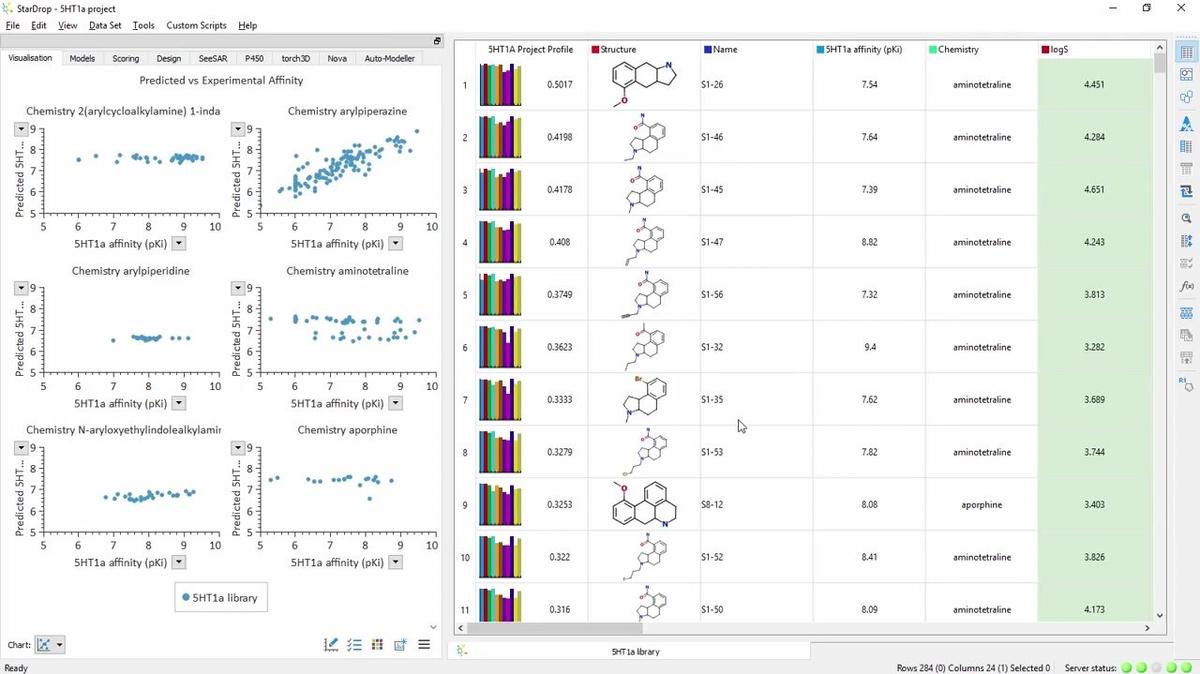
Hints and Tips: Trellising
A trellis enables you to compare the same chart for multiple categories of compound. This video shows you how, with just a few clicks. Next we'll see how to add multiple series to a single chart to show multiple trends or relationships in a single view.
-
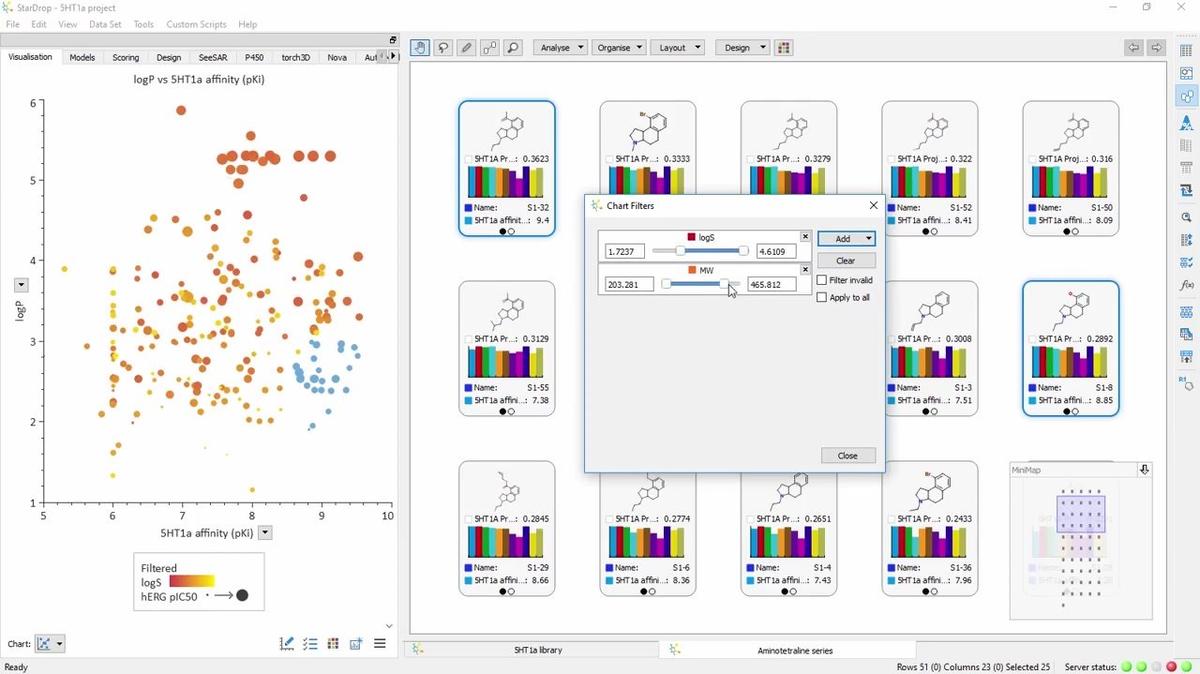
Hints and Tips: Interacting with your Chart
In this quick video, we show the many ways you can interact with your chart to show exactly the data you wish and link visualisations with your data sets. The next video in the series illustrates how to create a dashboard with multiple interactive plots, to show an overview of your project at a ...
-
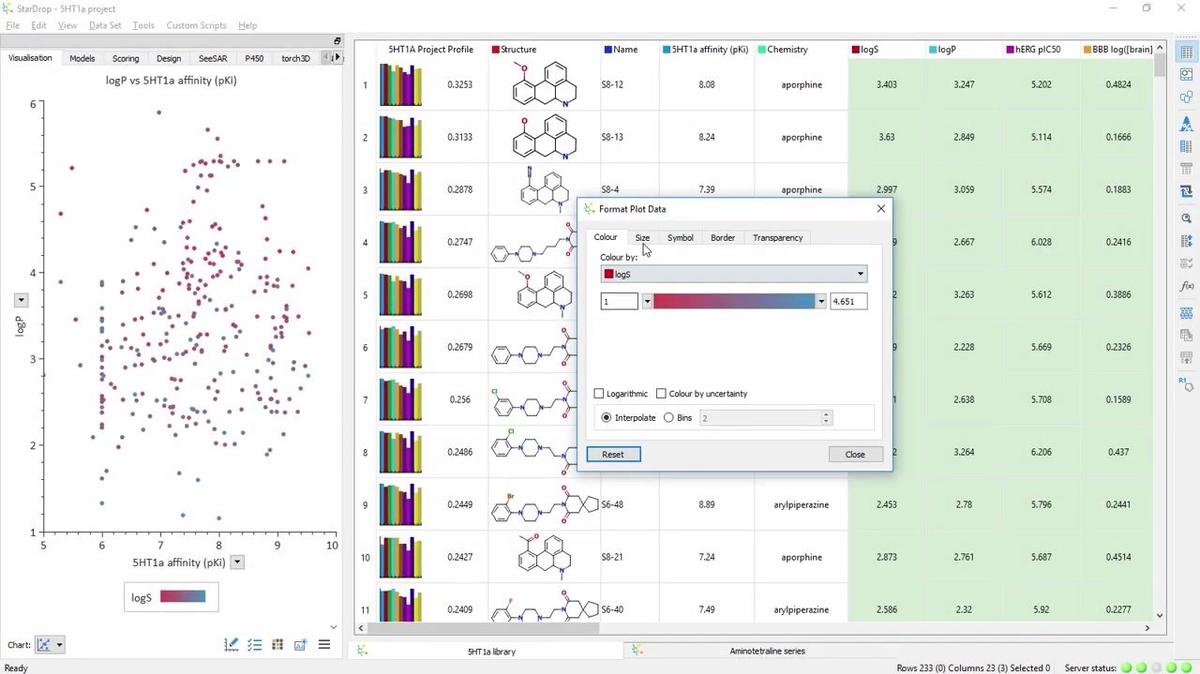
Hints and Tips: Formatting your Chart
This video demonstrates how to format your charts, using the properties in your data set, by colour, size, symbol, transparency... The next video shows the many ways you can interact with your charts to explore your data
-
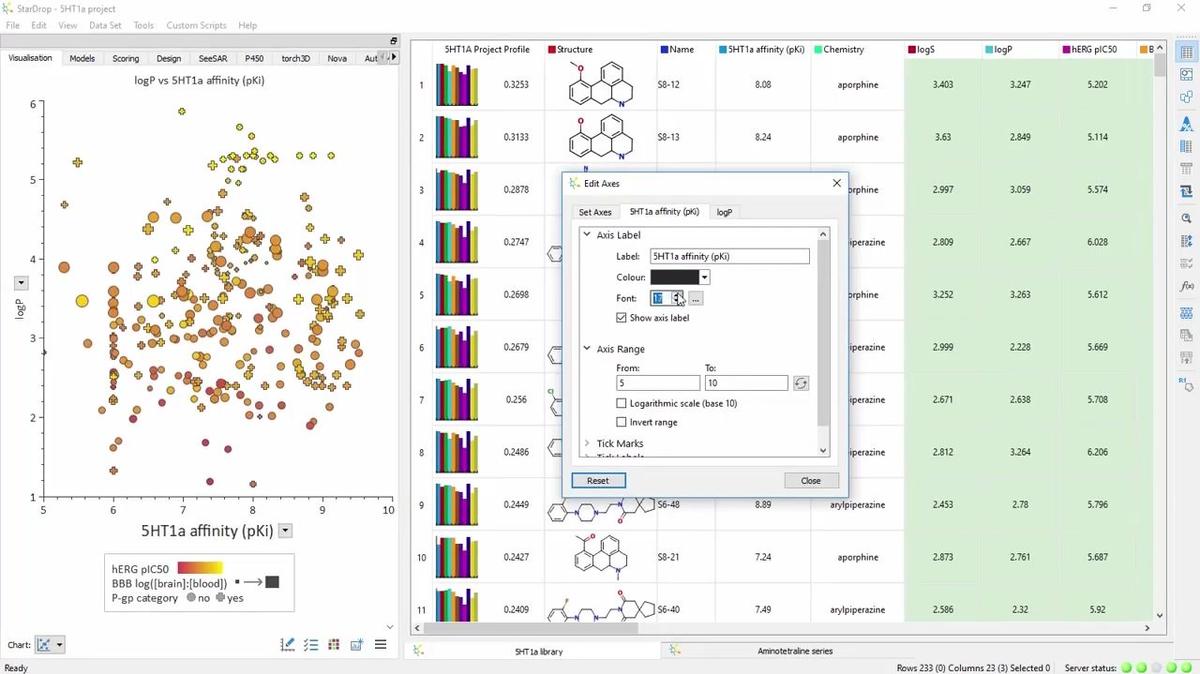
Hints and Tips: Editing Chart Axes and Title
Watch this video to see how you can edit the title of your chart and its axes, to precisely define their position, range, tick marks and labels. Next we'll explore how you can annotate your chart with labels to display structures and detailed data on key compounds.
-
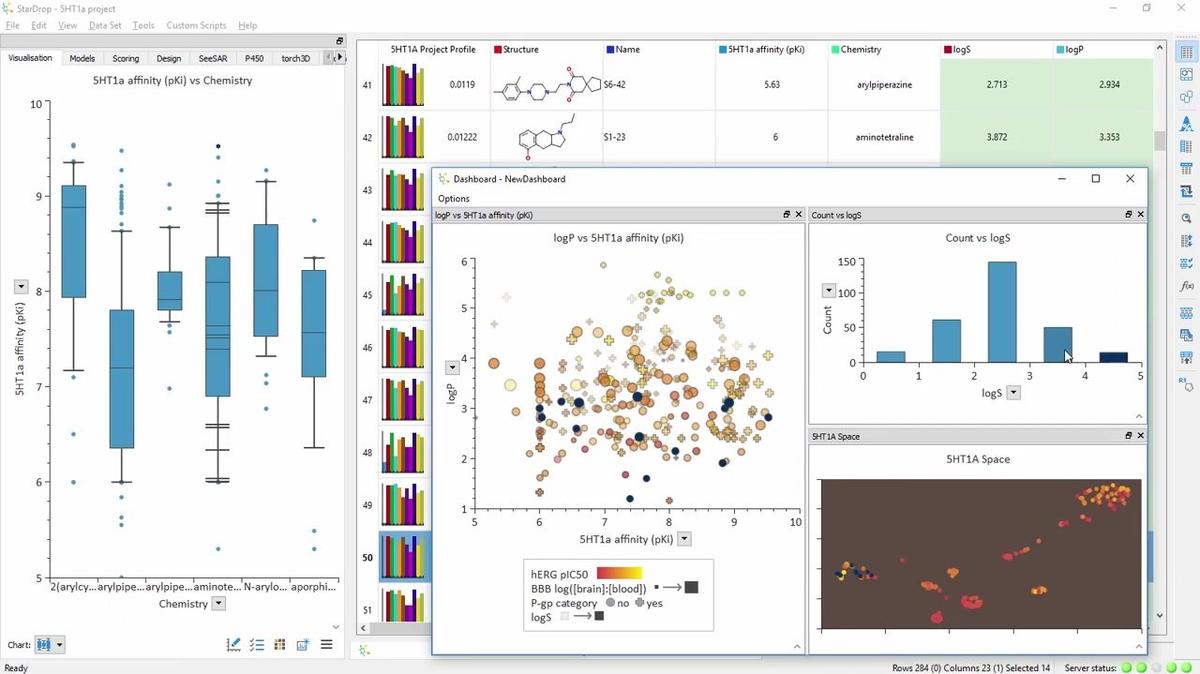
Hints and Tips: Data Visualisation Introduction
This short video gives an overview of StarDrop's rich data visualisation capabilities. The videos in the following series introduce how to quickly produce publication-quality charts and interactively explore your data. The next video in the series shows you how to get started by creating a chart.
-
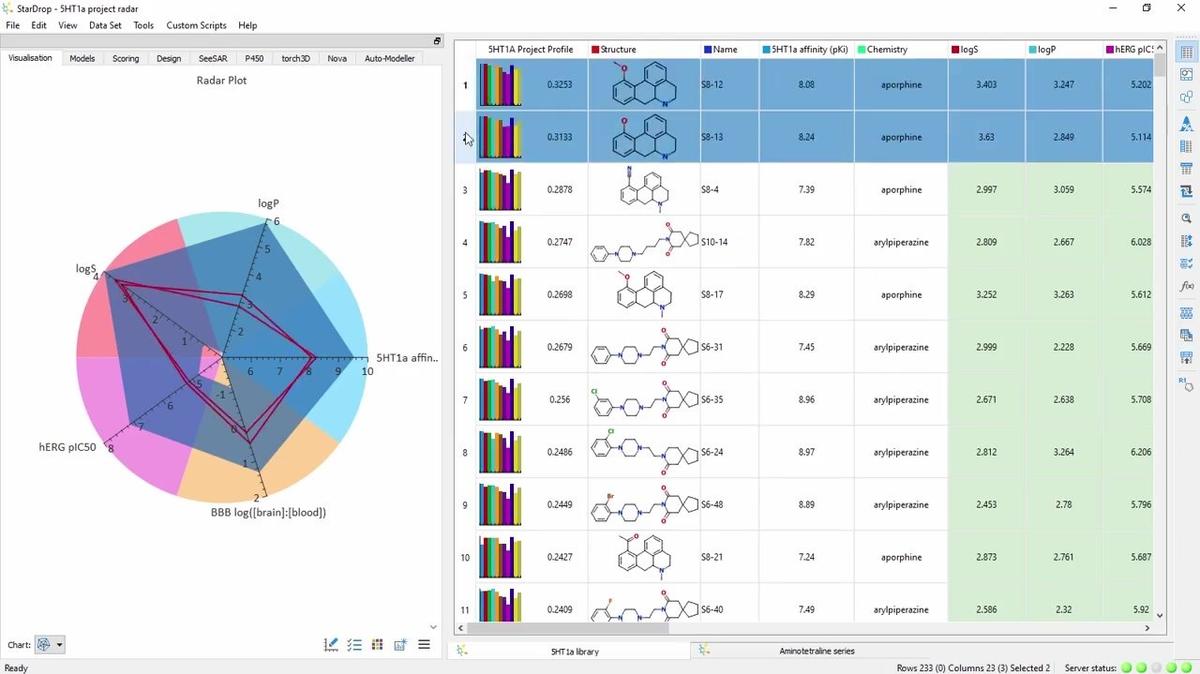
Hints and Tips: Customising your Chart
To see some of the many ways you can customise your chart, by setting fonts and colours or adding grids and lines, watch this short video. Once you've created the perfect chart, you'll want to copy it into your presentation or report. Watch the next video to see how.
-
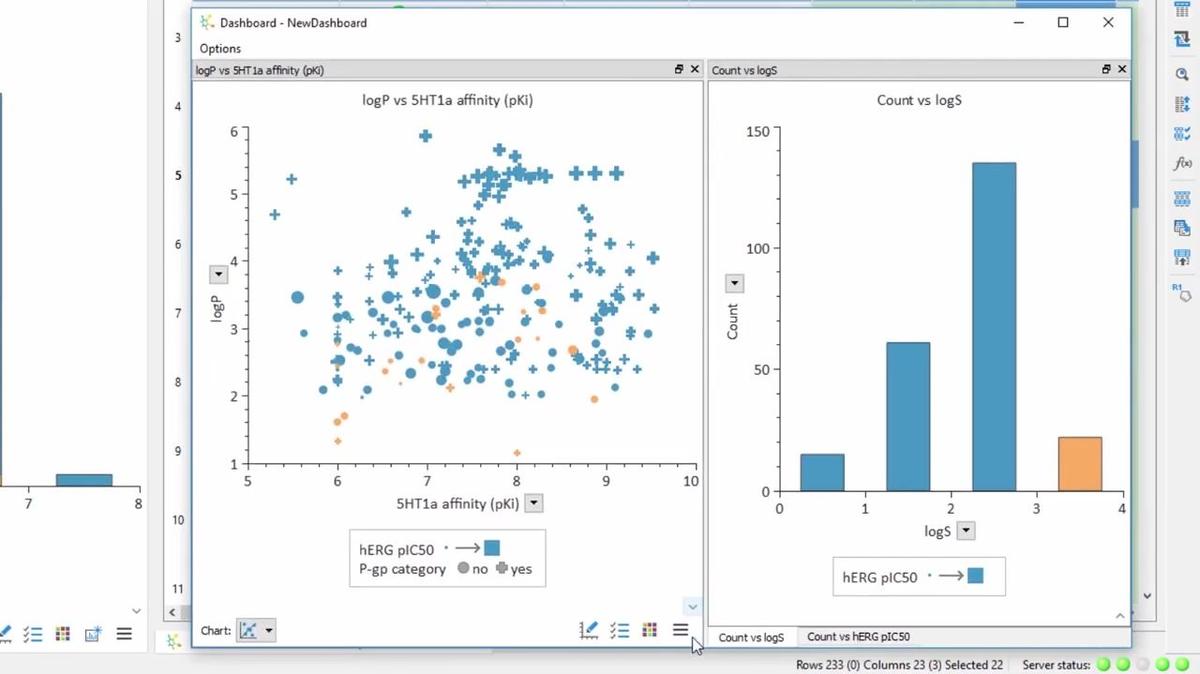
Hints and Tips: Creating a Dashboard
Here we'll see how to create a 'dashboard' containing multiple interactive charts, giving an instant overview of your project data. Follow the link to the next video in the series to learn how to edit your chart's axes and title to show the data exactly how you want.
-
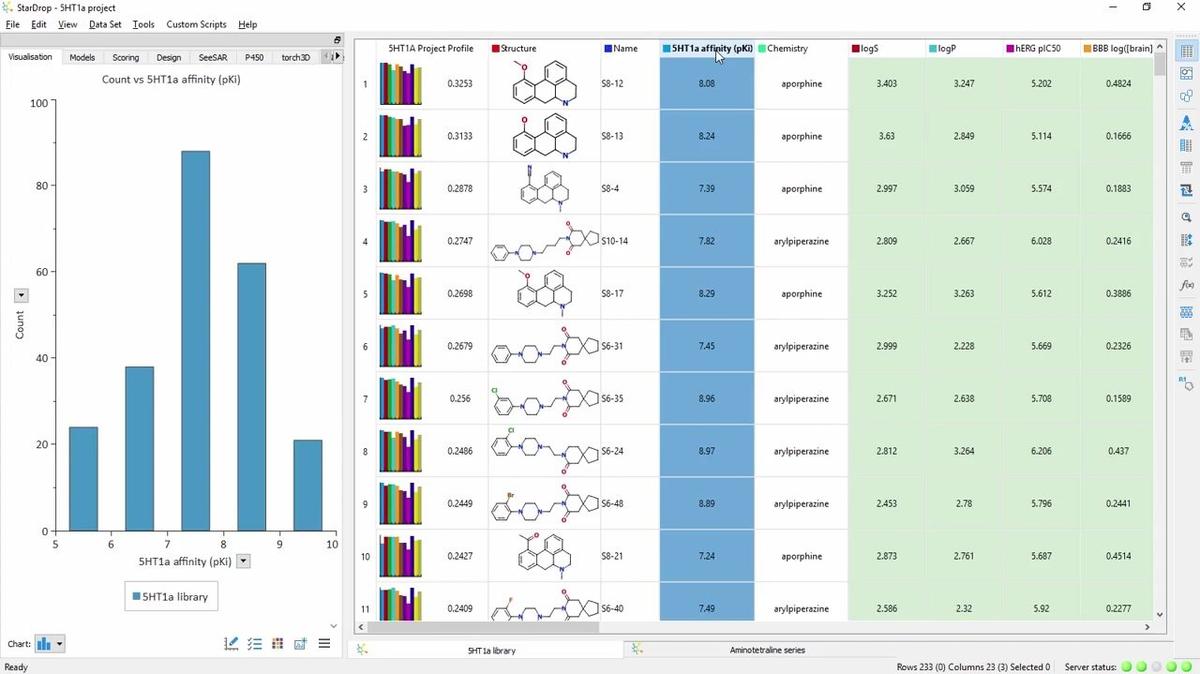
Hints and Tips: Creating a Chart
This short video introduces how to use the visualisation area in StarDrop to quickly create a chart from your data The following video illustrates how to format your chart to represent more dimensions of data by colour, size, symbol, transparency...
-
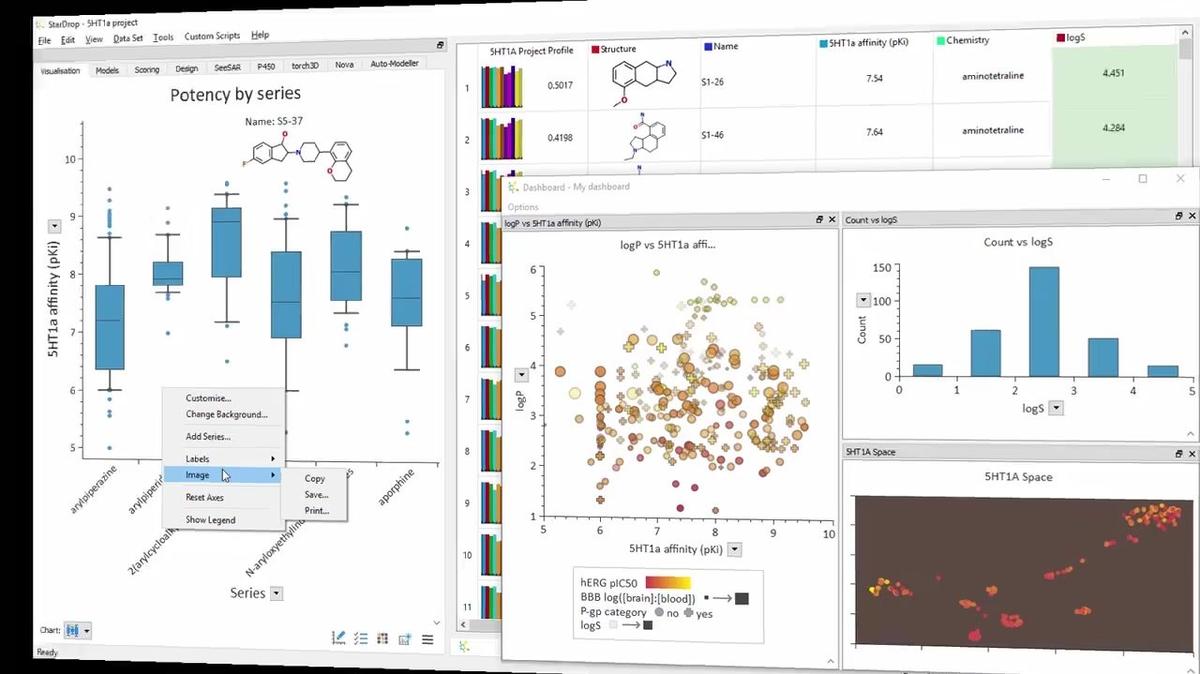
Hints and Tips: Copying or Printing your Charts
In this video we show how easy it is to copy your charts directly into your presentations and reports or print them directly from StarDrop. Moving on to more advanced visualisation techniques, the next video in the series shows how to create a trellised chart.
-
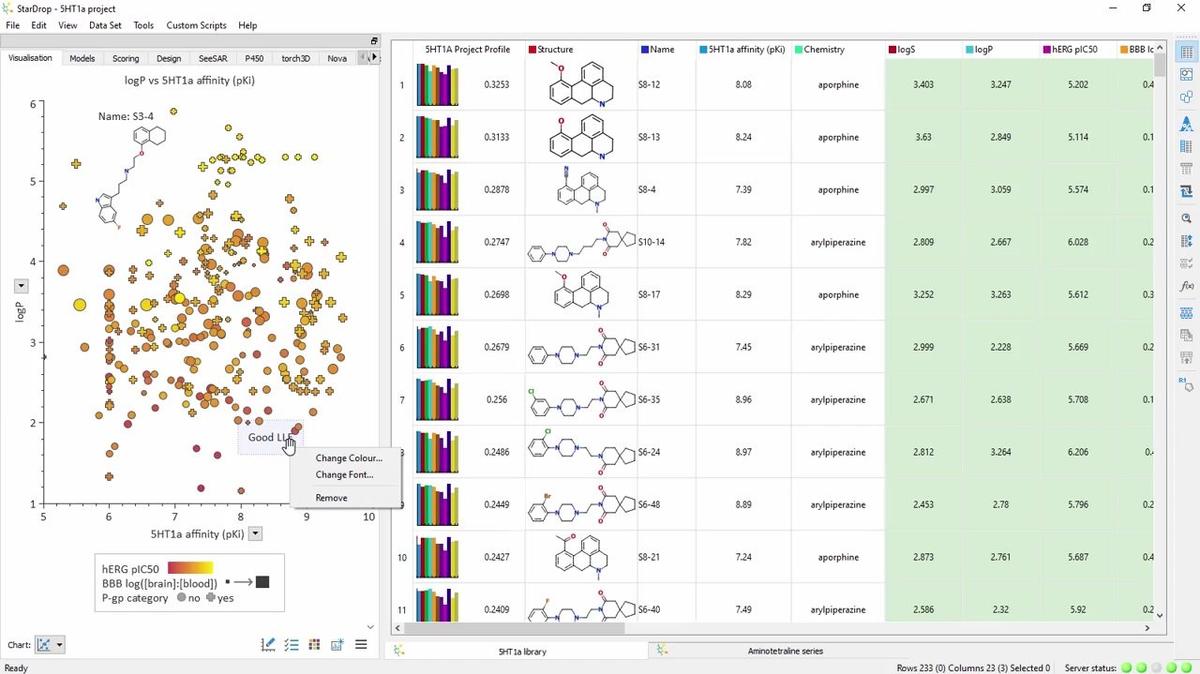
Hints and Tips: Annotating your Chart
You can add labels to your charts showing structure and data for key compounds or display your comments. Watch this quick video to see how... Next well explore the many ways to further customise you chart, for example by displaying regression lines, setting fonts and colours for your text, or ad...
-
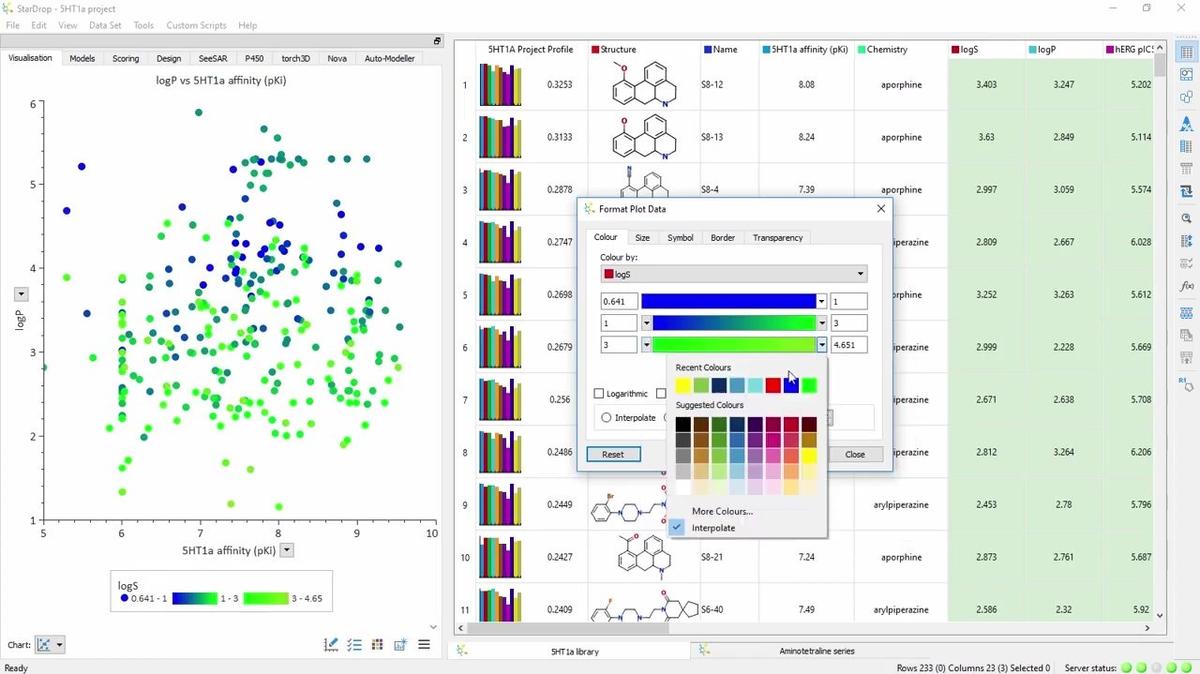
Hints and Tips: Advanced Chart Formatting
Here we'll show how to tailor the format scales in your charts to highlight the property ranges in which you're most interested. This is the last video in the visualisation series. We hope that you've found them useful and if you have any questions, please feel free to contact stardrop-support@o...
-
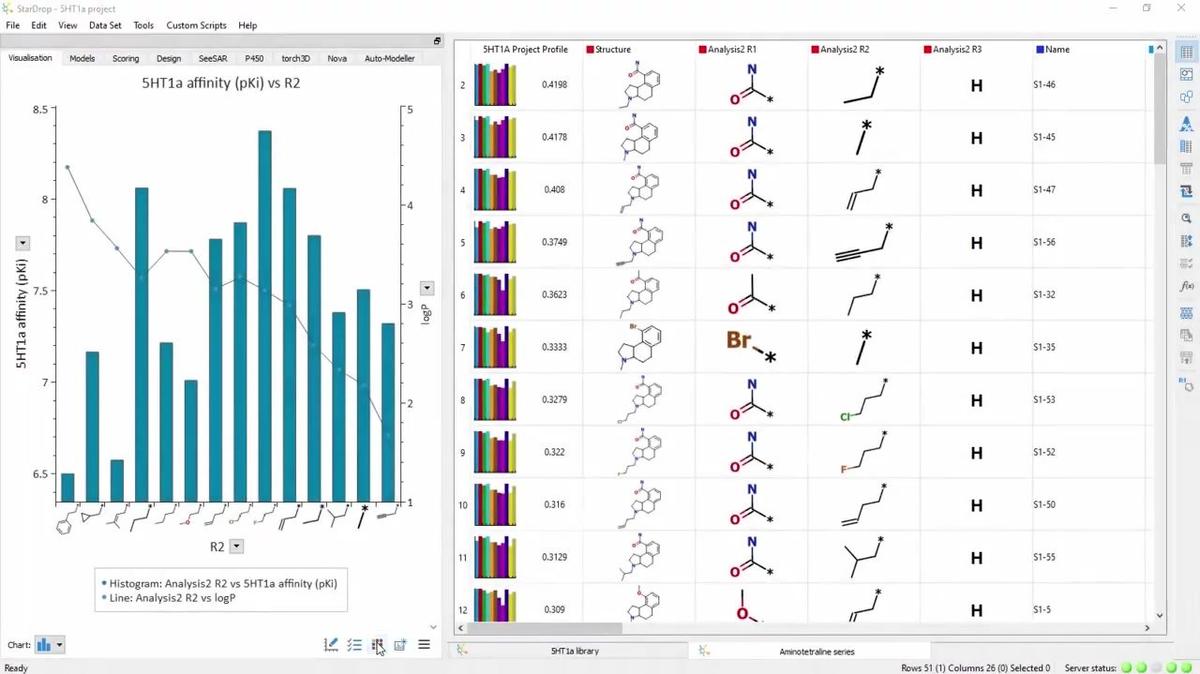
Hints and Tips: Adding Multiple Series to a Chart
You can create very information-rich visualisations by plotting multiple series on a single chart. In this video, we'll show you how... The final video in the series discusses advanced chart formatting to create more complex format scales and highlight the most important property ranges.
-
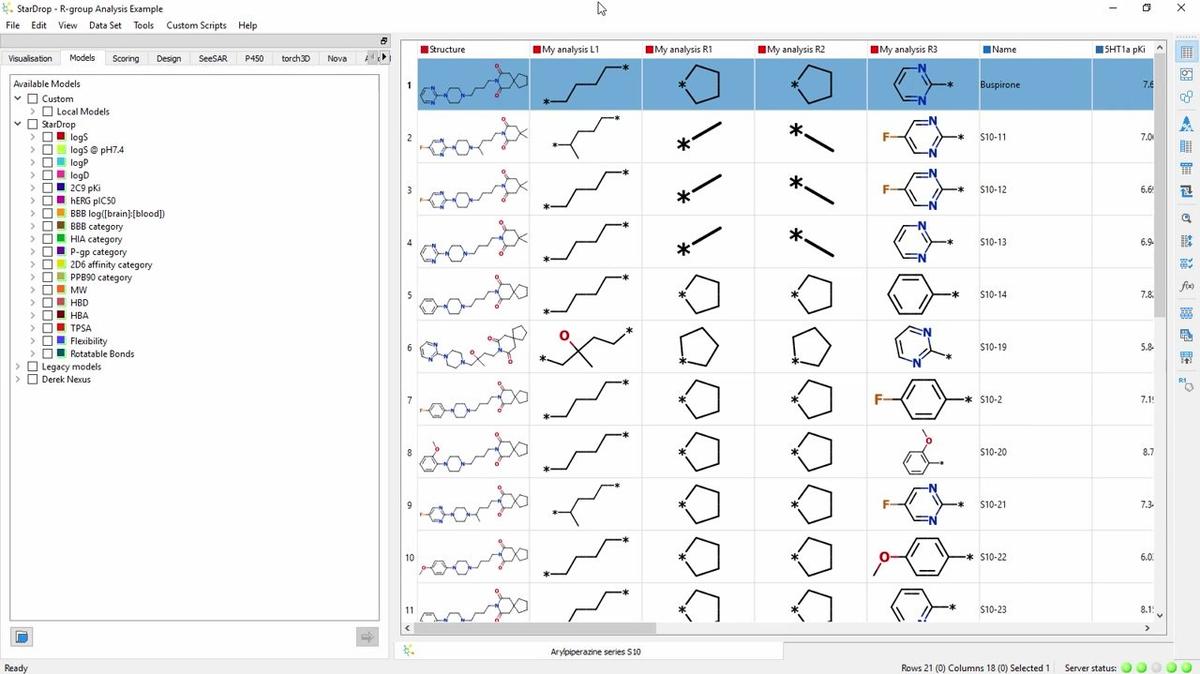
Hints and Tips: R-group Analysis
StarDrop's R-group analysis makes it quick and easy to explore the variation of properties by the substituents within a chemical series. This video shows how to perform an R-group decomposition and create SAR plots. The next video in this short series, illustrates how to create information-rich ...
-
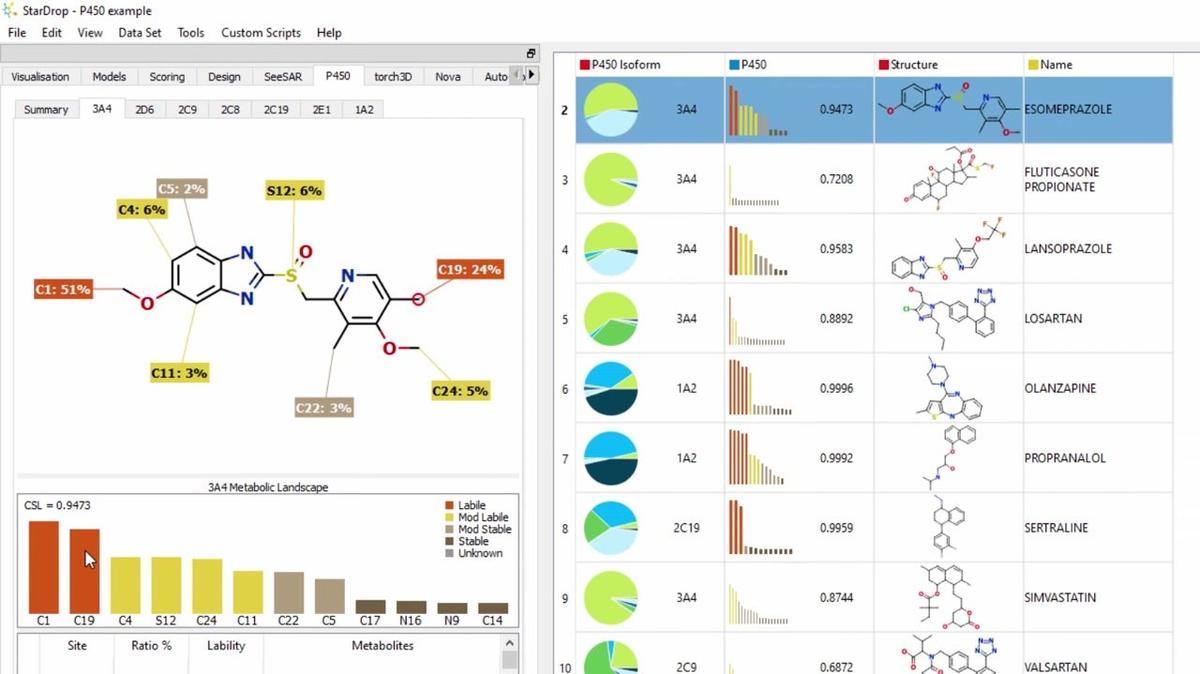
Modules and Features: P450 Module
This short movie gives an introduction to StarDrop's P450 module which enables you to quickly identify the regions of your molecules that are most vulnerable to metabolism by the major drug metabolising isoforms of cytochrome P450.
-

-
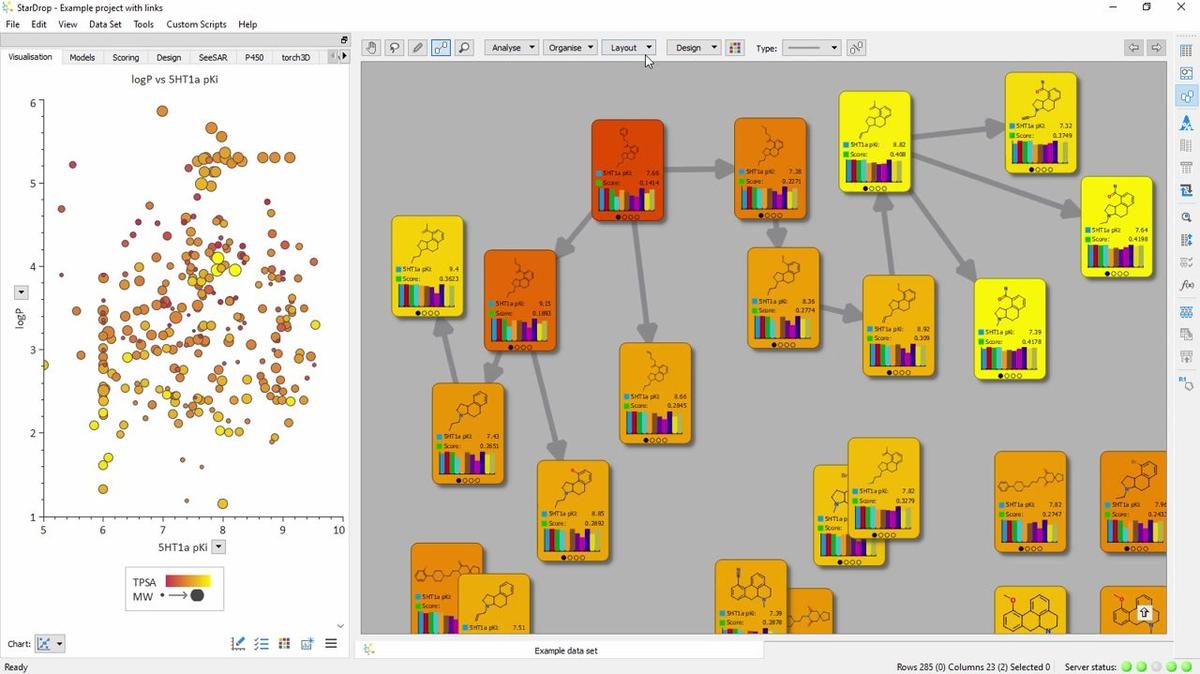
-

Modules and Features: Compound Prioritisation and Selection
In this demo we're going to take a look at how StarDrop can guide the prioritisation and selections of compounds using a combination of in vitro and in silico data. Using StarDrop's probabilistic scoring, data visualisation and selection tools you can see how we can select a diverse set of compou...
-
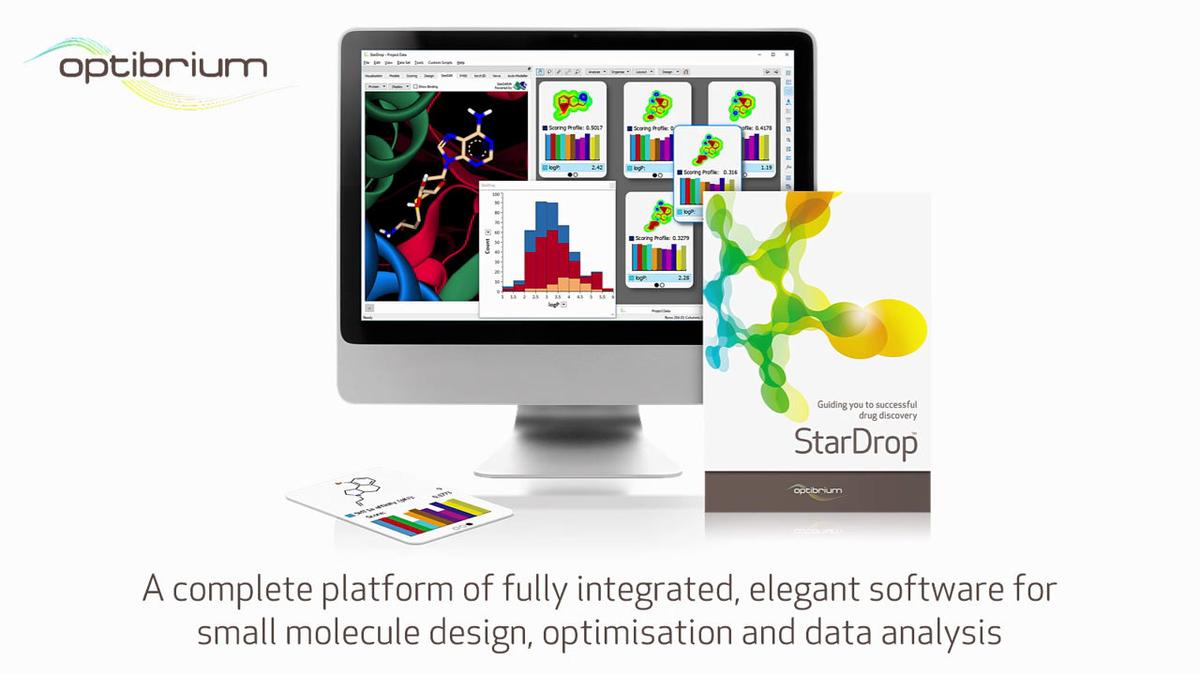
Introduction to StarDrop
With its comprehensive suite of integrated software, StarDrop delivers best-in-class in silico technologies within a highly visual and user-friendly interface. StarDrop enables a seamless flow from the latest data through predictive modelling to decision-making regarding the next round of synthes...
-

StarDrop's Card View: An Introduction to Analyses
Computational methods such as clustering, matched molecular pair analysis and activity landscapes, analyse complex data and produce valuable information to guide compound optimisation. But, interpreting their outputs has been a challenge, requiring laborious, expert analysis. Now, Card View displ...
-

Matched Series Analysis Introduction
This short movie gives an introduction to Matched Series Analysis in StarDrop
-

-

StarDrop - Auto-Modeller
This video showcases the use of the Auto-Modeller to construct a QSAR model for target affinity based on measured data. The resulting model is then utilized to aid in the creation of a new compound, using probabilistic scoring to balance potency and ADME properties. Additionally, the Glowing Mole...
-
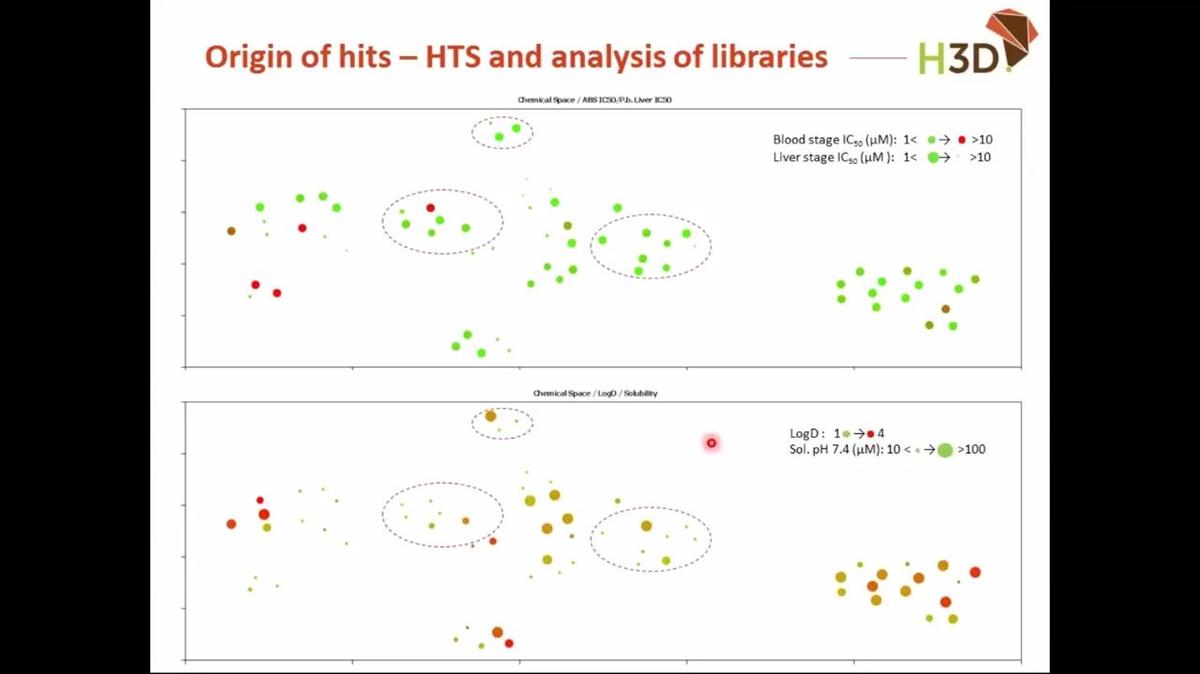
Hit to Lead Optimisation With the Aid of StarDrop
In this webinar, held on 17 April 2018, Claire Le Manach and Tanya Paquet, (H3D, University of Cape Town) and Dominique Besson (MMV) described their research and the application of StarDrop to the discovery of new anti-malarials.
-
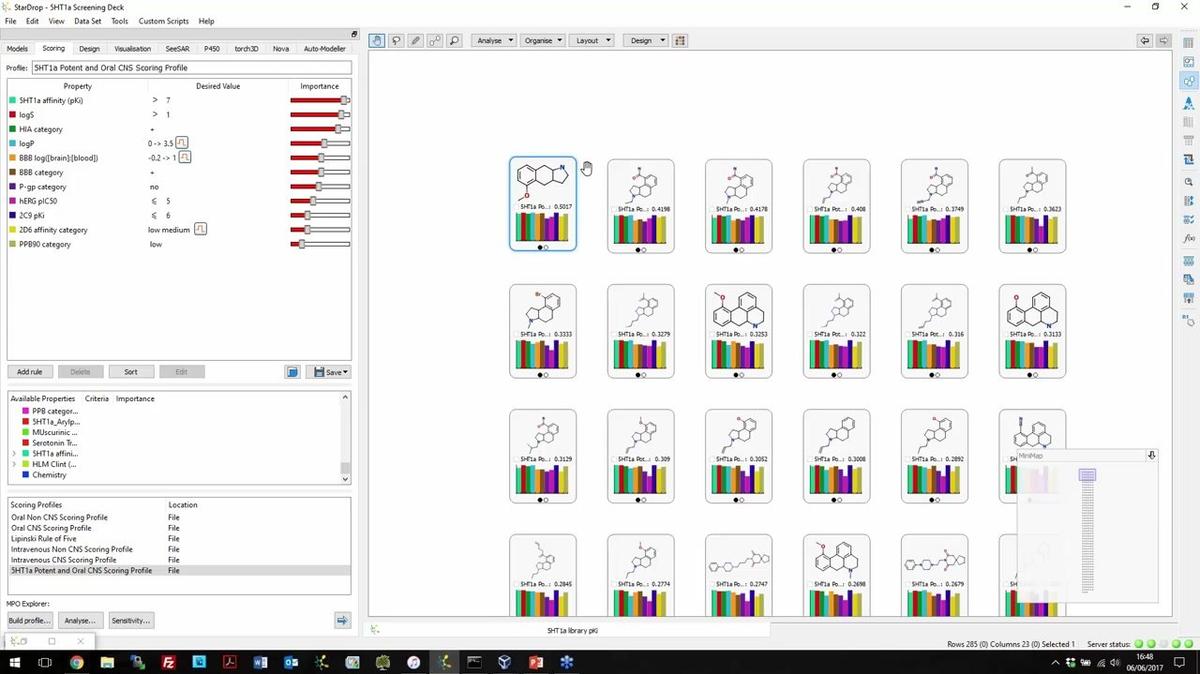
Webinar: Data visualisation Saying it all in a bite sized chunk
This Webinar was presented by Ed Champness on 6 June 2017. We often use the term “data visualisation” to refer to the creation of plots that enable us to represent tables of numbers in an easily-digestible form and yet we use many visual approaches for representing compounds, targets, assay resu...
-
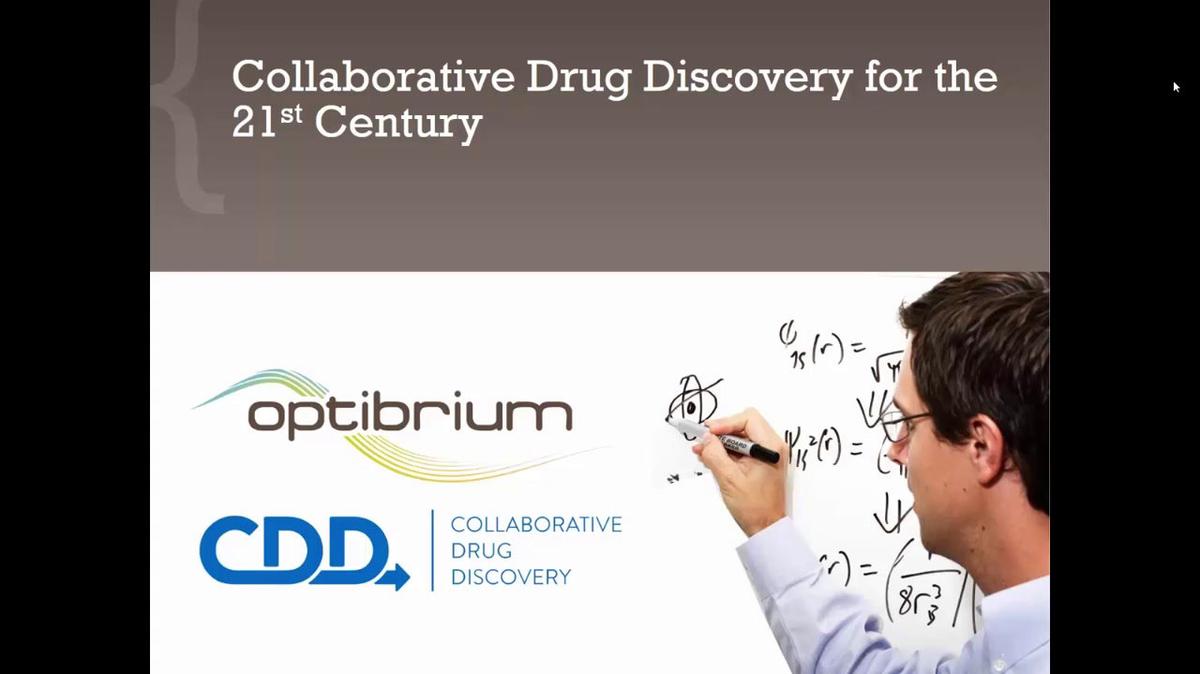
Webinar: Collaborative Drug Discovery for the 21st Century
In this webinar, held on 30 November 2016, Barry Bunin, CEO of Collaborative Drug Discovery, describes their CDD Vault software, including Activity & Registration, Visualization, Inventory, and ELN capabilities, which all address today’s markets. He also discusses the latest research from the...
-
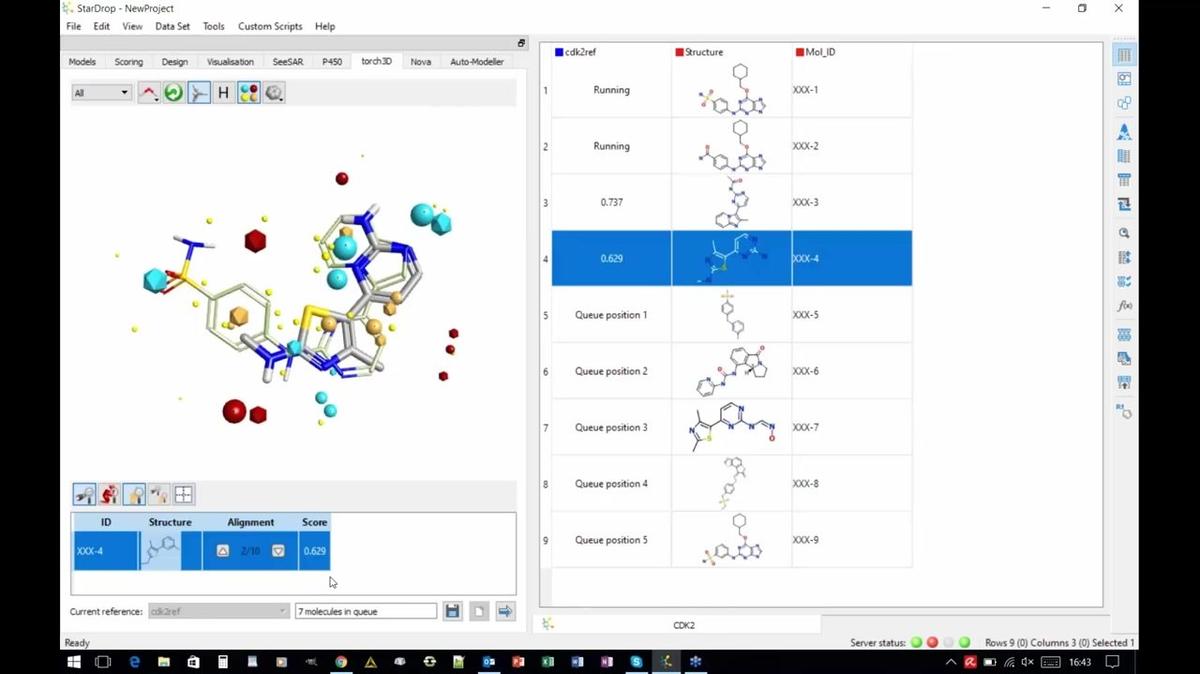
Webinar: Using Cresset's Electrostatics to inform 3D Molecular Design
In this webinar, held on 29 September 2016, Tim Cheesright of Cresset described how they use electrostatics to inform 3D molecular design in their Torch software.
-
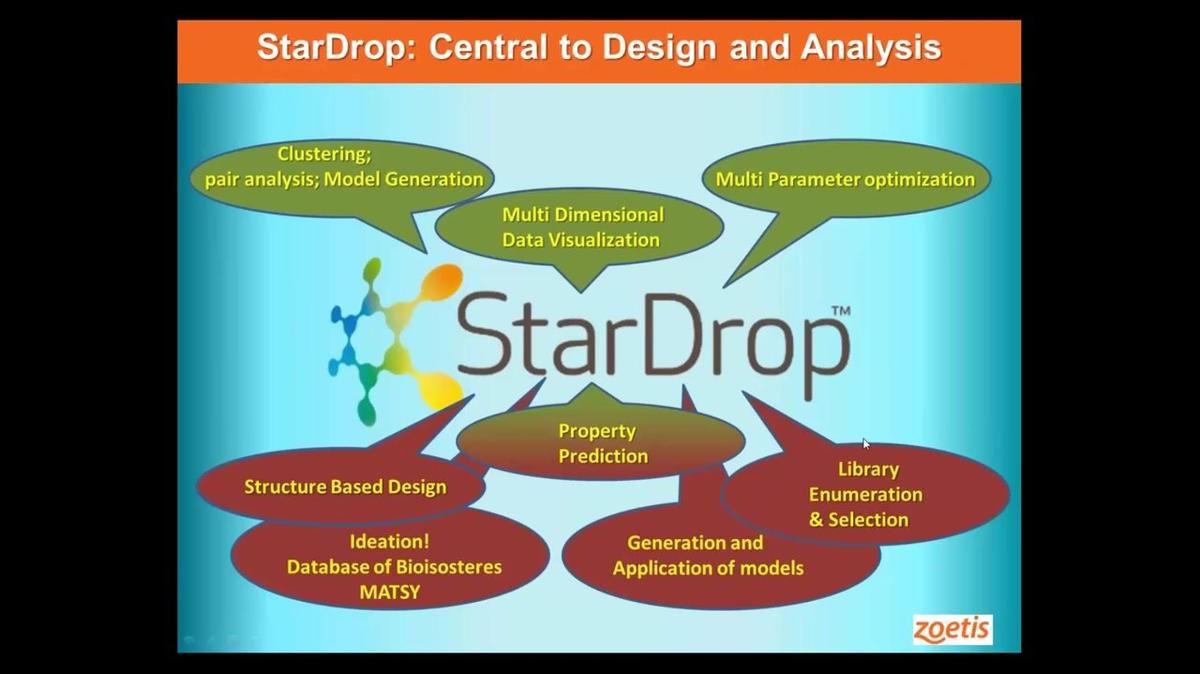
Webinar: Building a Data Analytics Infrastructure That Makes a Difference
In this webinar, held on 28 June 2016, Ashley Fenwick of Zoetis described the strategy they adopted to build a new software infrastructure to support their animal health drug discovery projects, having been spun out of a large pharmaceutical company.
-
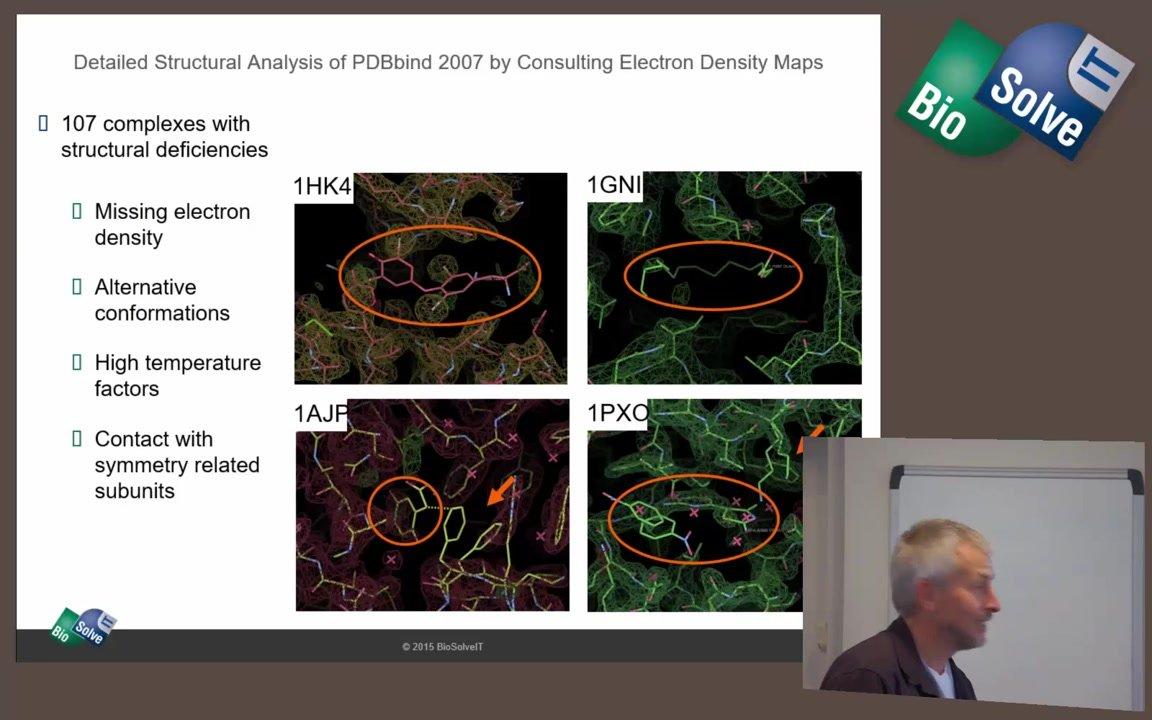
Structure-Based Design on the Chemists’ Desktops
Christian Lemmen, CEO of BioSolveIT, gave this presentation at Optibrium's Drug Discovery Consultants' Day on 18 November 2015. In it, he described the technology underlying BioSolveIT's Hyde scoring function and the SeeSAR application that makes structure-based design accessible on chemists' des...
-
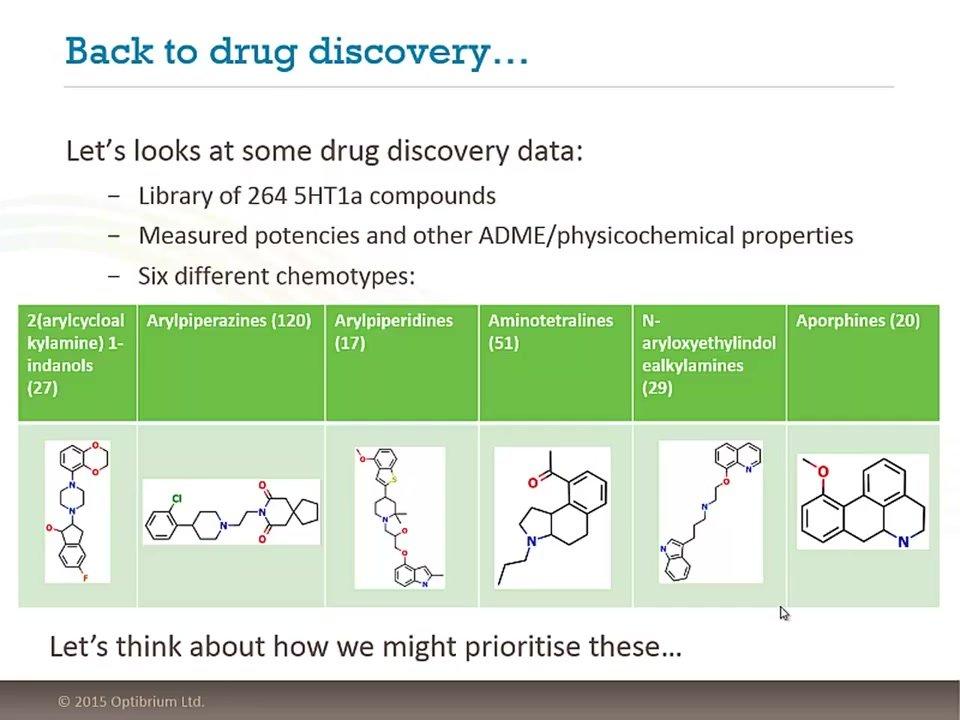
Webinar: Data Visualisation: New Directions or Just Familiar Routes?
This Webinar was presented by Ed Champness on 28 October 2015. Data visualization tools make it very easy to represent our data graphically and present it in a way that clearly communicates patterns and trends. But, there is a risk that visualizations may be used, in practice, to confirm or just...
-
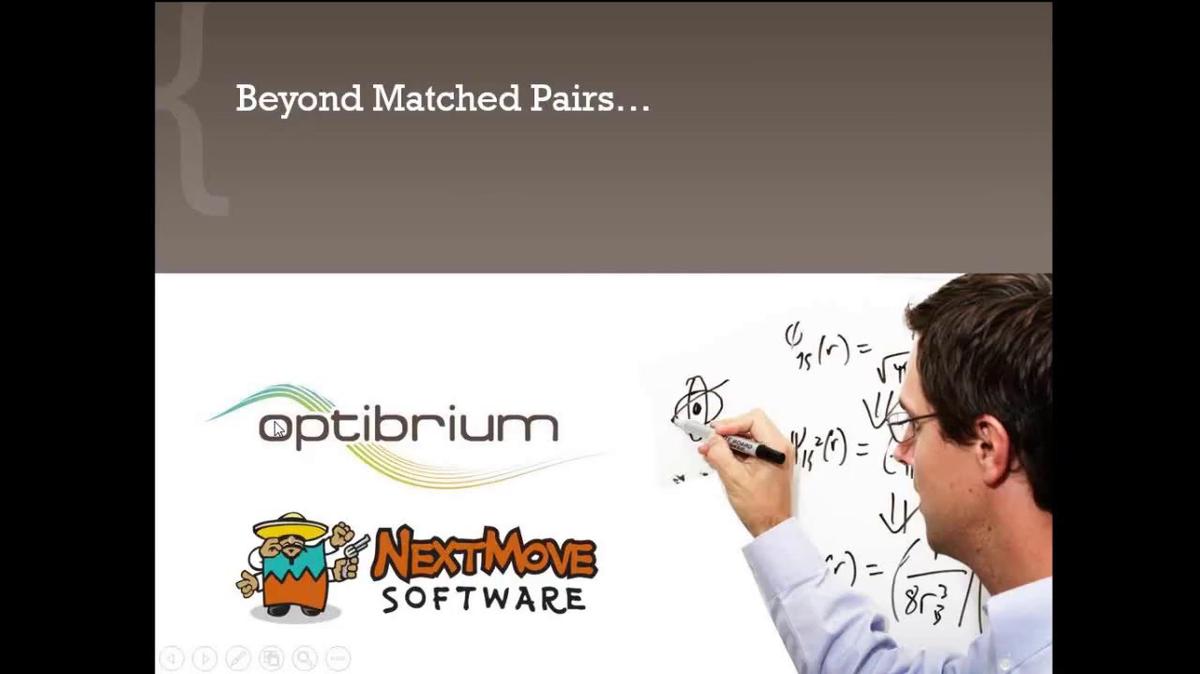
Webinar: Beyond Matched Pairs: Applying Matsy to predict new optimisation strategies
In this webinar, held on 14 April 2015, Noel O'Boyle of NextMove Software described how matched series analysis can predict new chemical substitutions that are most likely to improve target activity for your projects.
-
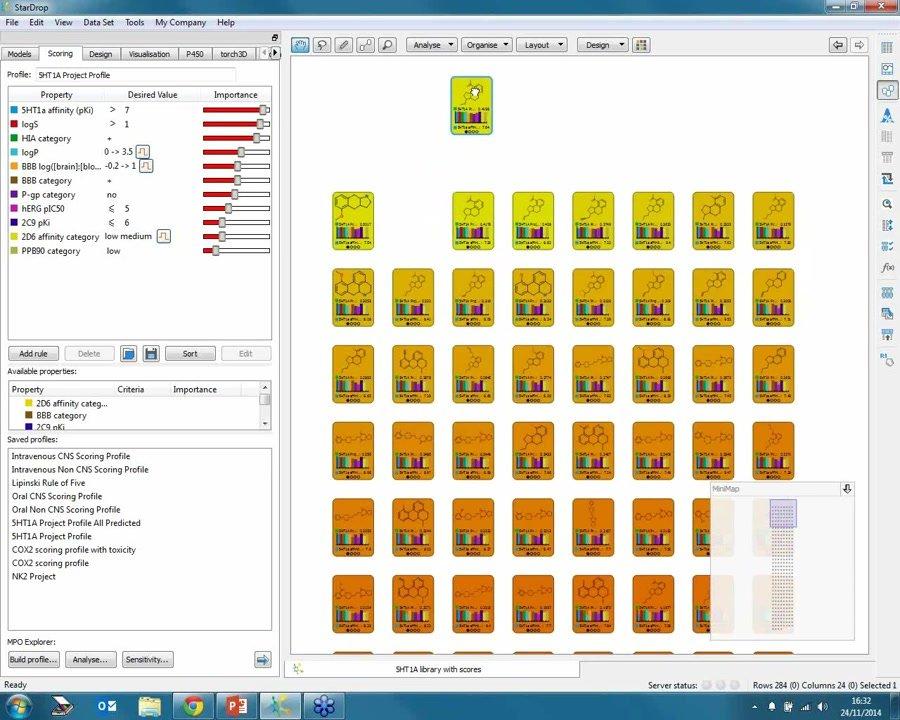
Webinar: StarDrop's Card View: Break Free from Spreadsheets
This Webinar was presented by Matt Segall on 7th November 2014. StarDrop's new Card View is a ground-breaking and intuitive way to view compounds and their relationships in the context of your discovery projects. It breaks free from restrictive 'chemical spreadsheets' that make it difficult to f...
-
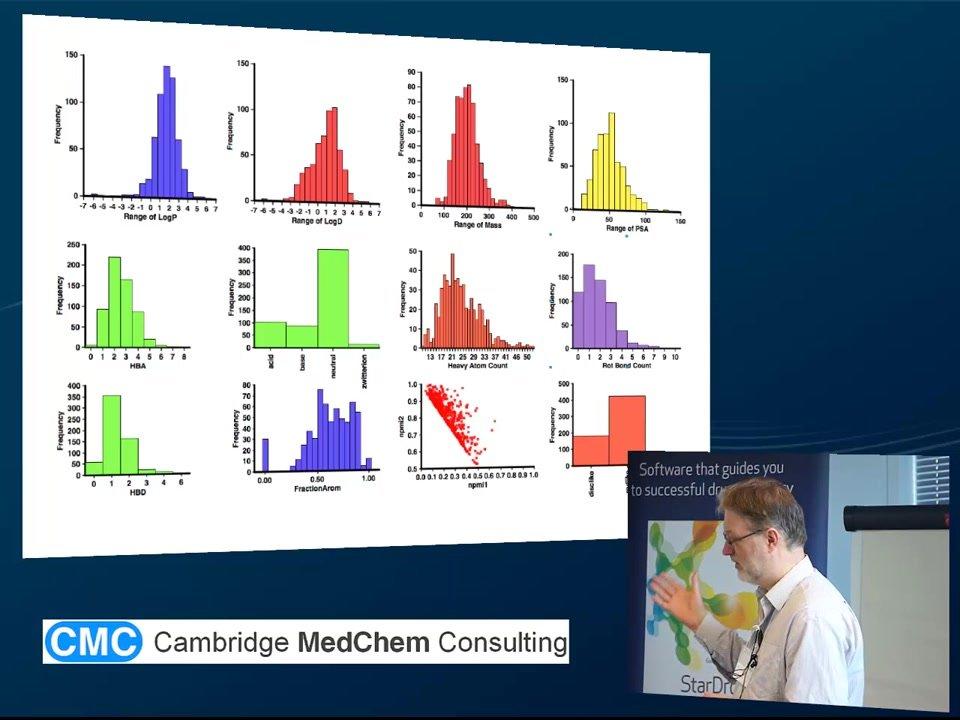
Fragment-based screening: What can we learn from published hits
This talk was given by Dr Chris Swain, Cambridge MedCem Consulting, at Optibrium's Drug Discovery Consultants' Day - November 2013.
-
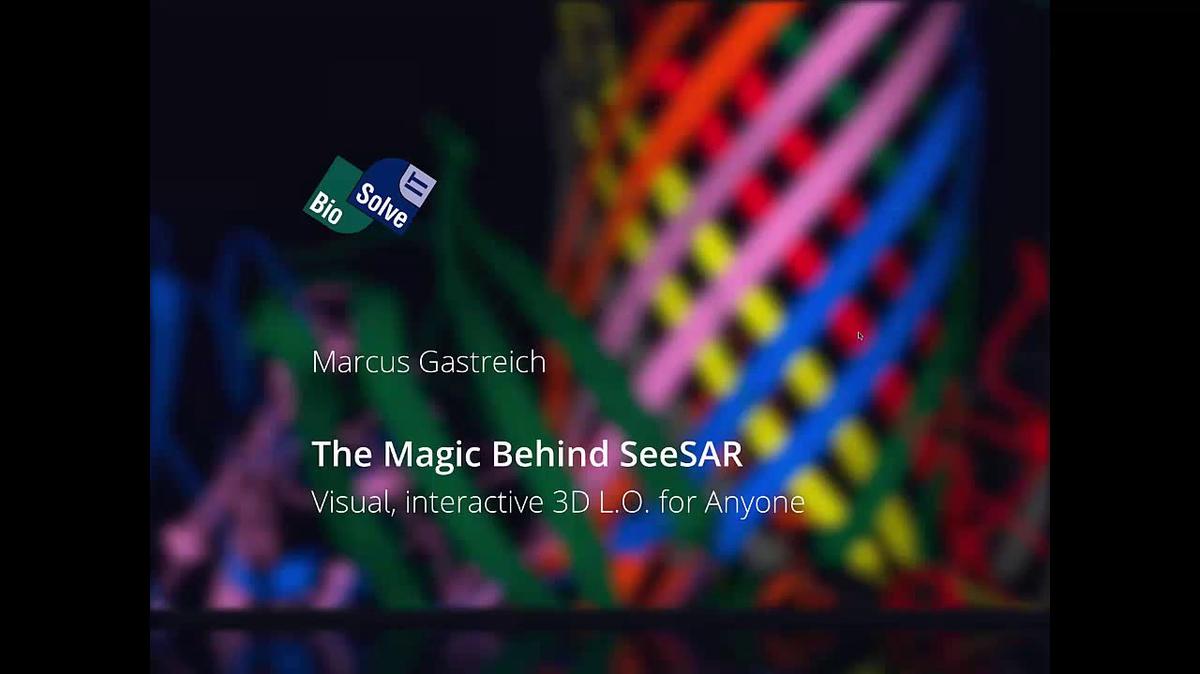
Webinar: The Magic Behind SeeSAR
In this webinar, held on 6 April 2016, Marcus Gastreich of BioSolveIT described the technology underlying their HYDE scoring function and SeeSAR. This also included worked examples to demonstrate how visually informed lead optimisation can save you considerable time, leading to compounds with an ...
-
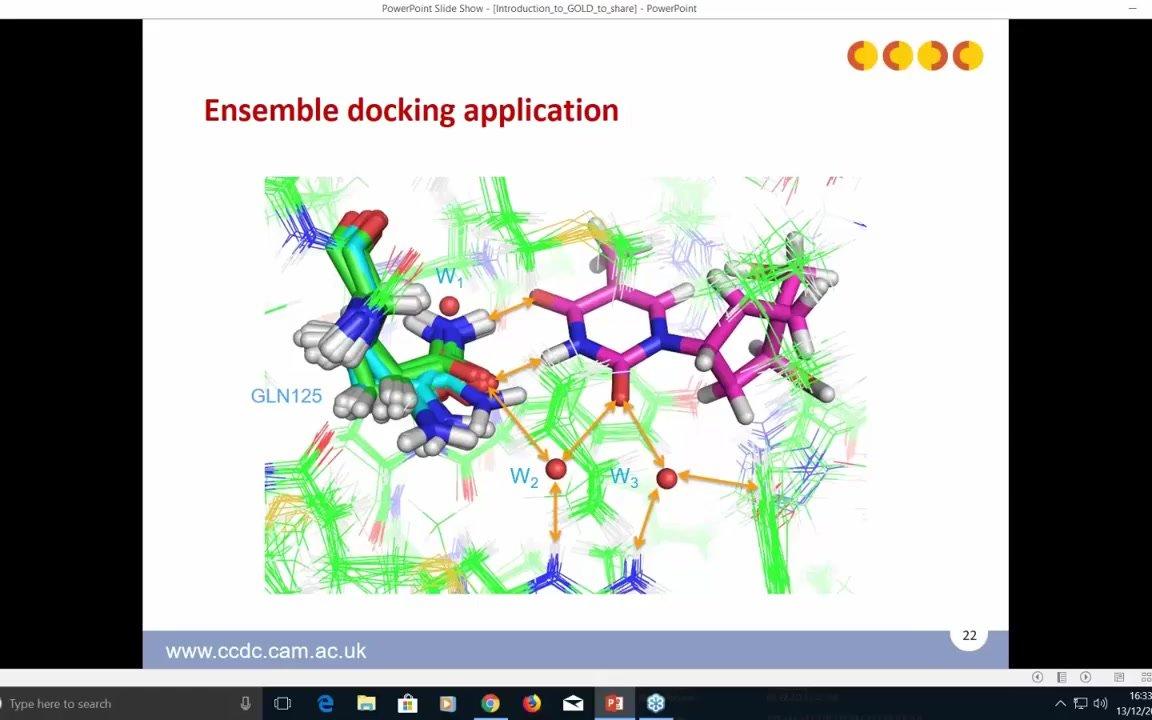
Webinar: Protein Ligand Docking with GOLD
In this webinar, held on 13 December 2017, Juliette Pradon, of Cambridge Crystallographic Data Centre describes the science behind the GOLD docking platform and Matt Segall demonstrates the link between StarDrop and GOLD, combining 2D and 3D SAR to guide the design of high quality compounds.
-
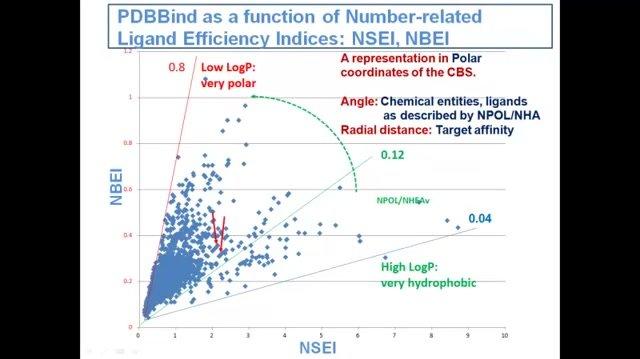
AtlasCBS Script for StarDrop
In this video, Dr Celerino Abad-Zapatero describes his approach for exploring chemico-biological space using Ligand Efficiency variables which is now implemented as a downloadable script add-on for StarDrop.
-
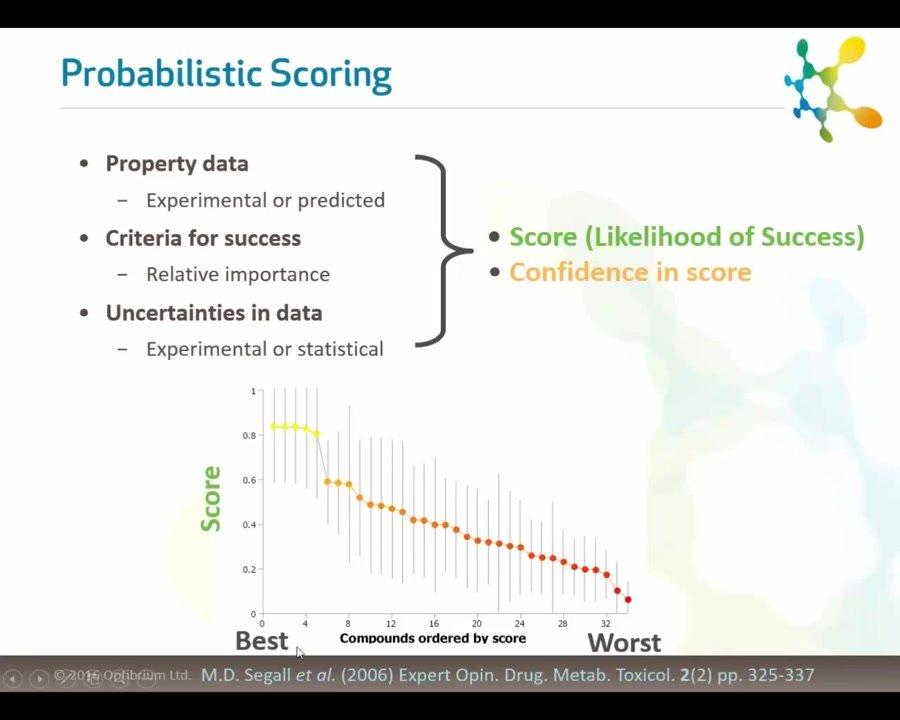
Webinar: Avoiding Missed Opportunities by Analysing the Sensitivity of our Decisions
We presented this webinar on 24 February 2016, in which we discussed how you can ensure that you don't miss valuable opportunities due to the criteria used to select compounds in your project. We presented a method for analysing the sensitivity of the prioritisation of compounds to a multi-parame...
-
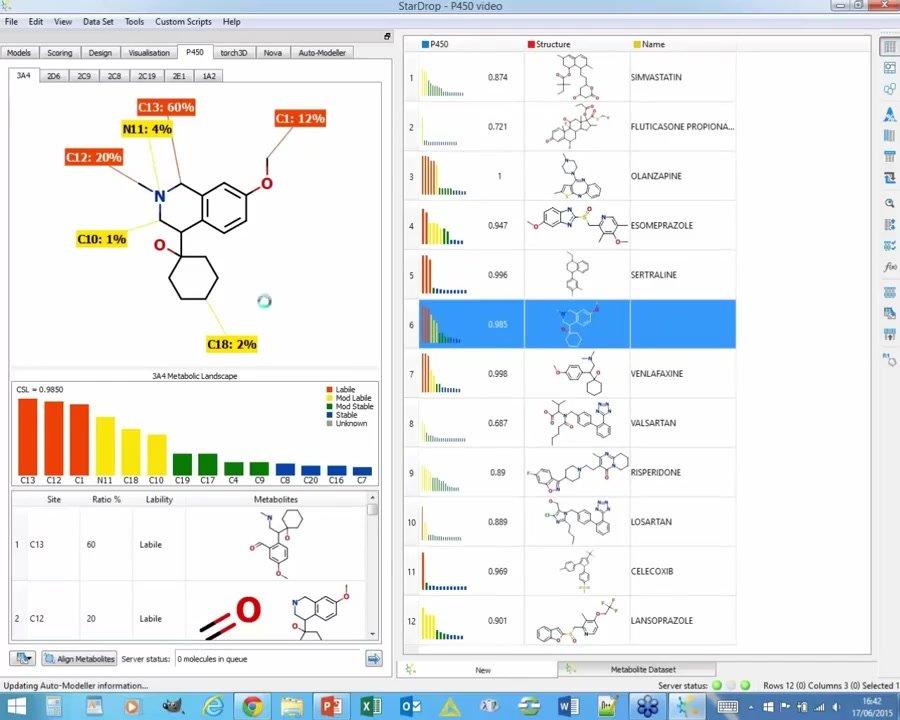
Webinar: Quantum Mechanical Models of P450 Metabolism to Guide Optimisation of Metabolic Stability
In this webinar, held on 17 June 2015, Jon Tyzack described how quantum mechanical models of P450 metabolism can be used to guide optimization of metabolic stability.
-
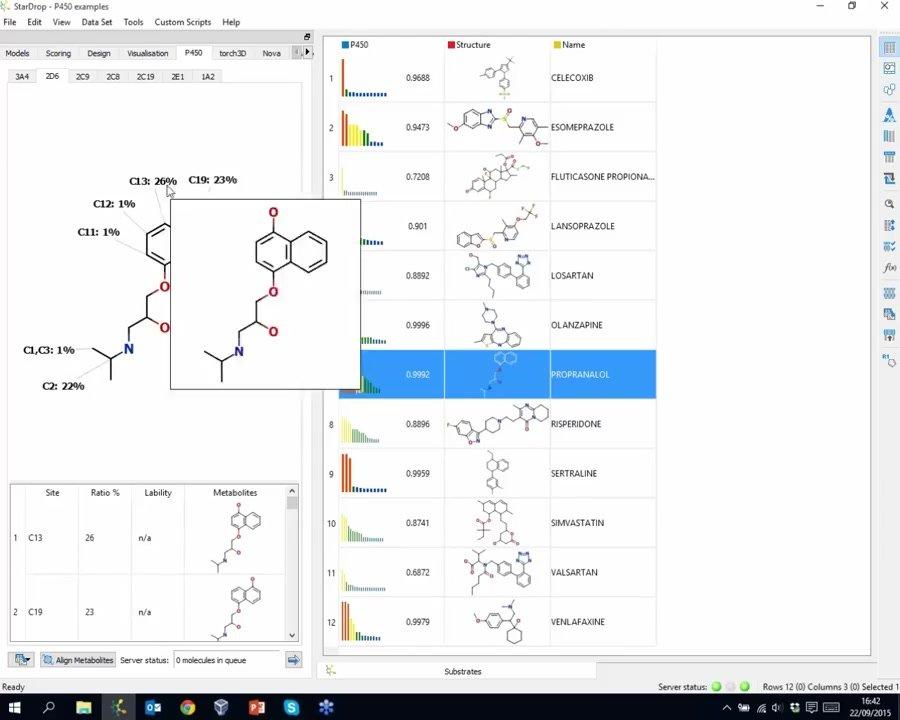
Webinar: Introduction to StarDrop 6.1
This Webinar was presented by Matt Segall on 22 September 2015. StarDrop 6.1 was launched in June, offering a number of new features for users including: Matched Series Analysis within the Nova module. New CYP450 metabolism models. The ability to save and instantly restore StarDrop project sess...
-

Tutorial: Guiding Selection and Design in Hit-to-Lead
The objective in this example is to identify one or more high quality chemistries for progression to detailed in vitro and in vivo studies, based on initial screening data for potency; ideally the compounds chosen for progression should not only be potent, but also have appropriate ADME propertie...
-

Tutorial: R-Group Analysis
The objective in this example is to take a look at an R-Group analysis of two data sets to identify functionalities which are influencing potency. In the second half we consider an example where we have different series, based around multiple scaffolds, where the substitution points are equivalen...
-

Tutorial: Hit List Triage with Card View
This example uses StarDrop's Card View to explore the results from a kinase project in which a large screening campaign has resulted in a hit list. The project team wish to evaluate the list to identify the chemotypes within and focus their resources on a small number of series that have demonstr...
-

Tutorial: Guided MPO of 2D and 3D SAR
This example uses a combination of 2D and 3D methods to understand and optimise a virtual library of Heat Shock Protein 90 (HSP90) inhibitors. The library, created by a de novo design process, is based around an amide substitution on a beta resorcylic acid core. The objective in this example is t...
